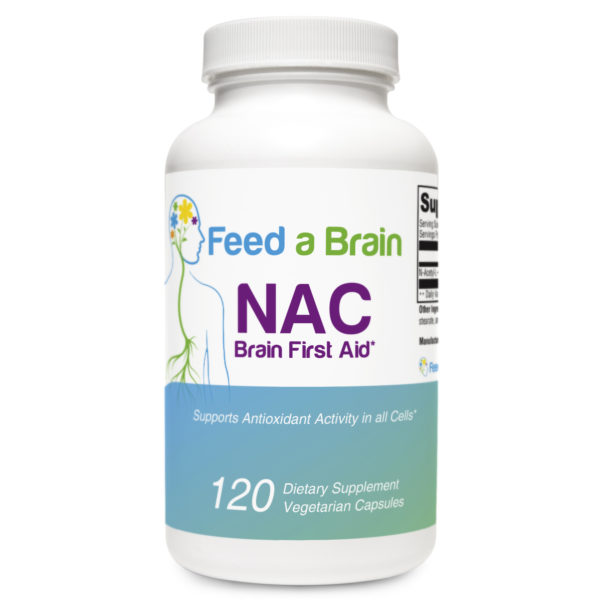N-acetylcysteine (NAC) : Brain First Aid
: Brain First Aid
RELAVENT RESEARCH:
[1] N-acetylcysteine reduces lipopolysaccharide-sensitized hypoxic-ischemic brain injury
Results
NAC (200mg/kg) provided marked neuroprotection with up to 78% reduction of brain injury in the pre+post-HI treatment group and 41% in the early (0 hour) post-HI treatment group, which was much more pronounced protection than another free radical scavenger, melatonin. Protection by NAC was associated with the following factors: (1) reduced isoprostane activation and nitrotyrosine formation; (2) increased levels of the antioxidants glutathione, thioredoxin-2, and (3) inhibition of caspase-3, calpain, and caspase-1 activation.
[4] Early, Transient Increase in Complexin I and Complexin II in the Cerebral Cortex following Traumatic Brain Injury Is Attenuated by N-Acetylcysteine
Abstract
… The early, transient increase in the injured cortex was completely blocked by N-acetylcysteine (NAC) administered 5 min following trauma, suggesting an involvement of oxidative stress. Neuronal loss was also reduced in the injured hemisphere with post-TBI NAC treatment. Our findings suggest a dysregulation of both inhibitory and excitatory neurotransmission following traumatic injury that is responsive to antioxidant treatment. These alterations in complexin levels may also play an important role in neuronal cell loss following TBI, and thus contribute to the pathophysiology of cerebral damage following brain injury.
[5] CETYLEV (acetylcysteine) effervescent tablets for oral solution Initial U.S. Approval: 1963
Want to buy in bulk? Go to the Bulk Store: feedabrain.square.site
More information from my mentors:
Why don’t doctors learn and tell their patients about Antiviral Nutrition?
Edited full video now available at: https://www.InflammationMastery.com/antiviral
Digital ebook: https://inflammationmastery-com-ichnfm-org.dpdcart.com/product/192836
Paper book: https://www.amazon.com/dp/1502894890
Articles: https://ichnfm.academia.edu/AlexVasquez
Europe: https://www.bookdepository.com/search?searchTerm=Dr%20Alex%20Vasquez&search=Find+book
———
Copyrighted by author. Usual disclaimers: These books/videos are not personalized medical advice which can only be delivered by a local licenced clinician who has seen and examined the patient, etc.
DOES NOT CONTAIN: Wheat, gluten, corn, yeast, soy protein, dairy products, shellfish, peanuts, tree nuts, egg, ingredients derived from genetically modified organisms (GMOs), artificial colors, artificial sweeteners, or artificial preservatives.
*These statements have not been evaluated by the Food and Drug Administration. This product is not intended to diagnose, treat, cure, or prevent any disease.


Reviews
There are no reviews yet.